#architectureblog
Explore tagged Tumblr posts
Text

Cycle of building: once a wharf, then a ruïn... What's the difference? Both are potential, just during another moment in the cycle....
Is this a building site or an abandonded building?
#cycle of time#heritage#oldversusnew building#building site#architectslife#architectsontumblr#architecture#architect#fully exposed and ruined#ruinsoftomorrow#architecturallegacy#architecturaltheory#architectureblog#architecture concept
3 notes
·
View notes
Text
“Women in Architecture”
A reflection on the overlooked pioneers and today’s leading voices shaping the built world. Let’s talk about history, equity, and the future of design.
Follow for more stories that matter
#WomenInArchitecture#ArchitecturalHistory#DesignEquity#LinaBoBardi#ZahaHadid#Modernism#ArchitectureBlog#GenderEquity#ArchitecturalVoices#WomenDesigners#RodrigoPantoja#architecture#arquitectura
0 notes
Photo

Experience the magic of Vigan City through the lens of its stunning architecture. From the past to the present, this article takes you on a journey through some of the Philippines' most iconic architectural influences. READ: https://www.ianfulgar.com/architecture/architecture-of-the-philippines-then-and-now/ . .
#history#architecturelover#historyfacts#architecturelove#historyinthemaking#oldarchitecture#historylesson#knowyourhistory#localhistory#beautifularchitecture#vigancity#historymade#architectureinlife#architectureph#architecturestyle#architectureblog#architecture#philippine#vigan#architectureandpeople#architecturepicture#philippineimages#city#streets#spanish#colonnial
0 notes
Photo

The innovative axonometric anatomical model Andreas Palfinger and Aysin Sahin designed for the East River Conservatory in NYC. This project showcases a visionary approach to sustainable urban development, integrating a public gateway, greenhouses, market spaces, and waste utilization composting. The closed-loop system exemplifies environmental stewardship as food waste is transformed into nutrient-rich compost that fuels vegetable cultivation within the greenhouses. A thoughtful design harmonizes nature with urban living.
#sustainablecities#urbaninnovation#greendesign#nycconservatories#environmentalstewardship#creative_architecture#architecturemodel#architecturefactor#urbanarchitecture#architecturemodels#architectureideas#architectureblog#urbanism#archilover#dezeen#concept#3dmodel
1 note
·
View note
Text
Designing for Collaboration: Creating Spaces that Foster Teamwork and Innovation| Studio AsA

Collaboration and innovation are the foundations of any organization’s success in today’s fast-moving and changing corporate environment. Businesses understand the crucial role a well-designed workstation plays in encouraging teamwork and fostering innovation as they attempt to stay ahead of the curve.
Office interior designers are essential to creating these environments, creating settings that foster collaboration while sparking the flames of creativity. In this post, we explore the trade of designing collaborative workspaces and uncover methods and ideas that foster a culture of cooperation and creativity.
The Power of Purposeful Design: Setting the Stage for Collaboration
Office Interior Designers in Bangalore are well-versed in the science of creating environments that align with a company’s culture, values, and objectives. When designing for collaboration, they start by understanding the organization’s unique identity and the teams that will occupy the space.
Every design element, from layout to furniture, color palette to lighting, is meticulously curated to resonate with the company’s essence. Modern workplaces are more than just desks and chairs; they’re hubs of connection.
Collaborative spaces are strategically positioned to encourage spontaneous interactions, whether it’s a cozy lounge for casual brainstorming sessions or an open breakout area for impromptu meetings. Promoting these encounters, Workplace Interior Design in Bangalore cultivates an environment where collaboration becomes second nature.
Diversity in Spaces: Catering to Different Collaborative Needs
A one-size-fits-all approach simply doesn’t cut it when it comes to collaboration. Corporate Interior Design Companies in Bangalore understand that different teams have varied requirements for effective collaboration. To address this, they create a diverse range of spaces that cater to these unique needs.
Quiet Retreats for Focused Collaboration: Recognizing that some tasks demand deep concentration, interior designers carve out quiet corners where teams can immerse themselves in their work. These tranquil zones minimize distractions, allowing for focused brainstorming and problem-solving sessions.
The Hive of Activity – Co-Working Spaces: The rise of co-working spaces has revolutionized collaboration. Co-Working Space Interior Designers in Bangalore master crafting energetic, shared workspaces that promote the cross-pollination of ideas. These spaces are designed with flexible furniture arrangements and vibrant aesthetics that encourage spontaneous exchanges among diverse professionals.
Embracing Flexibility: Adaptable Spaces for Agile Teams
Agility is the name of the game in today’s business world, and office interior designers are well aware of this reality. They infuse flexibility into their designs, creating spaces that can be easily reconfigured to accommodate different team sizes and project requirements.
Versatile furniture pieces, such as modular desks and movable partitions, allow teams to adapt the layout according to their immediate needs quickly. This adaptability fosters a sense of ownership over the workspace and empowers teams to take ownership of their collaborative endeavors.
Innovative Design for Innovative Minds: Sparking Creativity
Innovation thrives in environments that stimulate the mind and awaken creativity. Workplace Interior Design in Bangalore taps into this concept by integrating elements that inspire innovative thinking.
Biophilic Design for Nature-Inspired Creativity: Bringing the outdoors indoors, biophilic design elements like living walls, natural light, and organic textures infuse spaces with a sense of nature. Studies show these elements can boost creativity and problem-solving skills, making them invaluable tools in the designer’s kit.
Interactive Zones and Brainstorming Nooks: Strategic placement of interactive whiteboards, writable surfaces, and comfortable seating in brainstorming nooks invites spontaneous idea generation. These designated zones signal that innovation is not confined to specific spaces; it’s a fluid part of the workspace culture.
Color Psychology and Collaboration: The Palette of Teamwork
Colors undeniably impact human psychology, influencing emotions, mood, and even cognitive processes. Office Interior Designers in Bangalore leverage this knowledge to cultivate an atmosphere that encourages collaboration and innovation.
Balancing Calm and Energy: The choice of colors can significantly impact the overall vibe of a space. Designers strike a balance between calming hues that promote focus and vibrant tones that energize and inspire. For example, soothing blues and greens can be combined with refreshing pops of orange or yellow to create a harmonious atmosphere.
The Role of Technology: Seamlessly Integrating Innovation
Technology is a crucial catalyst for collaboration and innovation in the digital age. Corporate Interior Design Companies in Bangalore weave technology into the very fabric of their designs.
Integrated Connectivity: Charging stations, high-speed Wi-Fi, and smart boards are seamlessly integrated into the workspace, ensuring that teams can effortlessly leverage technology to enhance their collaborative efforts.
Conclusion: A New Horizon of Collaboration and Innovation
The importance of workspace design has never been greater than today, given how quickly the company is changing. Workplace interior designers, corporate interior design firms, or a Co-Working Space Interior Designer in Bangalore lead the way in developing collaborative environments beyond conventional boundaries. These designers are laying the groundwork for a new era of cooperation and invention by embracing meaningful design, different places, adaptability, and a dash of innovation. Companies’ environments will be a significant factor in determining how successful they become as long as they are seeking success.
1 note
·
View note
Text

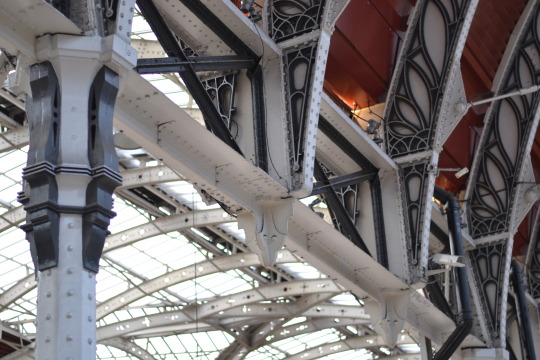
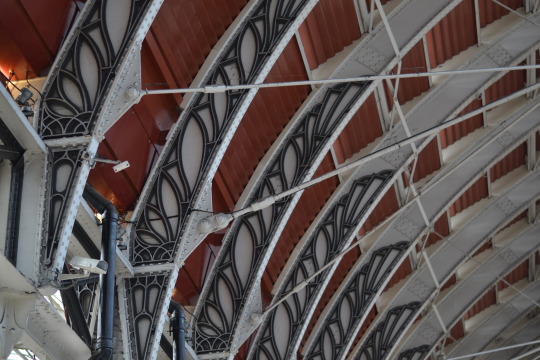
#paddington station#london#it's like a giant dragonfly#get ready for two weeks of heavy architectureblogging#Paddington#train station
2 notes
·
View notes
Photo
ysvoice:
| ♕ | {renovation} The Old Station House - on Sköna Hem
photo by Mette Helena Rasmussen | Styling by Tia Borgsmidt featured on blog riazzoli | architectureblog posted
Blog {things I like, things I love} I love this old station building turned in to a home. Isn’t it fun that the old ticket window is still there!?

366 notes
·
View notes
Photo



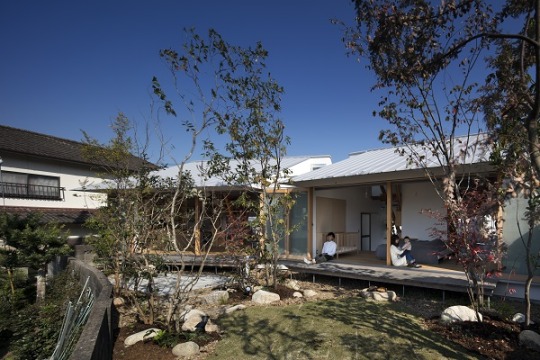
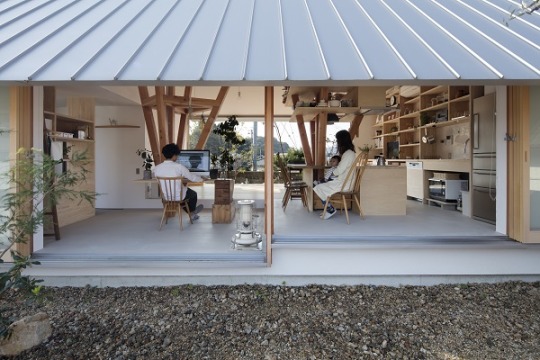
CONTAINER DESIGN - Takanobu Kishimoto. About house. Hyōgo Prefecture. Japan. photos: Eiji Tomita
#architecture#design#exterior#house#building#home#living#residential#city#architags#japanese architecture#japanese design#architecturestudents#architectureschool#japan#nippon#interiors#interior#architectureblog#garden#landscape#CONTAINER DESIGN#Takanobu Kishimoto
2K notes
·
View notes
Photo
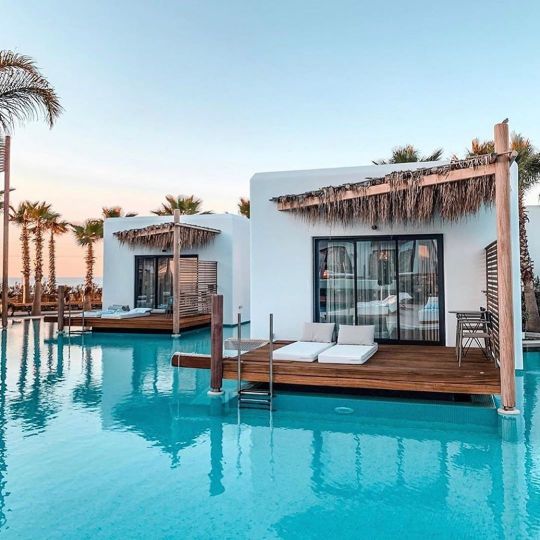
This look 😍😍! @restless.arch —————————————————— #Interiors #interior #interiordesign #interiorstyle #interiordecor #interiordesigner #interiorsblogger #luxuryinteriors #interiordecorating #architecture #architectural #architecturephotography #interiorphotography #architectural #granddesigns #designer #homedesign #architectureblog #extension #vogueliving #ukarchitecture #homeextension (at Dublin, Ireland) https://www.instagram.com/p/B9ZDxAOnUJm/?igshid=1octnr06gegcg
#interiors#interior#interiordesign#interiorstyle#interiordecor#interiordesigner#interiorsblogger#luxuryinteriors#interiordecorating#architecture#architectural#architecturephotography#interiorphotography#granddesigns#designer#homedesign#architectureblog#extension#vogueliving#ukarchitecture#homeextension
2 notes
·
View notes
Photo

Life in a concrete jungle . . . #architectureblog https://www.instagram.com/p/B_RUrDqJd1x/?igshid=tn8unviybtgw
1 note
·
View note
Text
Who has ownership of space?
You’ll quickly realise that although UCL is big and seems open, there’s a rabbit warren of spaces you can’t squeeze through and you are (even as a graduate student) just the visitor here, your hunch is confirmed as you walk up to a door only to find it shut, a black box to your left, flashes red – you can’t enter. A girl almost half your size it seems, with brunette hair, baggy jeans and an ominously sized tote bag, fearlessly walks up to the door and scans her card; it flashes green and four beeps in a major key signal that she can go through. She walks in with the confidence of a queen who knows this is her land; you’re left outside to press the ‘call’ button and wait for the sympathetic receptionist to ask your name and let you in.
There are inhabitants of a building and there are visitors, but the boundaries between them are not clear; for example, at UCL, the student reside on campus daily, their cards give them access to the majority of the buildings (degree depending) and this is an institution which, at least in theory, is designed for them and their development, so they are inhabitants, right? But if I tell you, the student’s leave after a number of years, they have a fluid ownership limited by time and the educators on the other hand – are here to stay. What then?
Though lecturers are more likely to stick to one building, they are able to penetrate the core of the space, they have offices; they are a permanent fixture, so is this theirs? Then of course you complicate matter further, you have the library staff, the cleaners, those who work in the campus cafés and bars and that binary of inhabitant/visitor no longer seems an adequate way to categorise the social life of a building, you understand that there is a larger social network at play, one that shifts with space and time and where you can assume a number of different roles.
“Well, this is the Slade.
You think you’re coming in?”
At the Slade, you are brutally reminded that this is not your territory. A woman, in her late 50’s, stack of books cradled in one arm turns to you as you try to walk in and scathes, “Well, this is the Slade. You think you’re coming in?”
The Slade has prestige; it considers itself an elitist institution that only loosely sits underneath the umbrella of ‘University College London’. It is a space of tension because in essence it is a private space within a public university. Though we like to think there is a democracy to our education and student status, the Slade requires a membership that you don’t have. The building is understated, sitting on the left flank of the Main Quad, there is no attention-grabbing sign that says ‘here, look at me, I’m the Slade’ no, this is a building that doesn’t want to be disturbed and walking through the silent, high-ceilinged corridors you’d think the same of the students and staff who use it. Amongst the stretch canvas and empty rooms and is that a secret elevator? you get lost, you are not wanted here, you don’t belong.
The Slade is a stark contrast to the Bartlett, a new-built cube that has a weightless feel due to its façade punctuated by large rectangular glass windows, through which you can see models and papers, the life of the architect visible to you from the street level. It invites you in to see more. The door though small, and arguably hidden beneath the cantilever, is flooded with students and staff running in and out, a group of four stand just off to the right, cigarettes in hand, conjecturing with the other, deep in some discussion about their next crit, you’re sure. Your entrance is not an event to them, you are free to enter and explore the ground floor exhibition space.
Similar to the Slade, the Bartlett does require membership. Beyond the initial ground floor space you will find a barrier that requires key card entry but this is set back from the entrance. The inhabitants of the building can go deeper but as the visitor you are encouraged to come in into the foreground of the building and join the social network.
Private spaces have boundaries, they are excluding, this may have negative connotations, but requiring membership to a building can be useful. It creates a social space where inhabitants are intrinsically connected before meeting - the supporting social structure is pre-fabricated though it’s walls and doors are free to transform.
Membership defines more directly the inhabitants and visitors of a building (though there are still levels to ones inhabitation) and gives structure to the social meaning of space. Knowing you have ownership of a private space changes your behaviour, as with the student who swans into the student centre, the artist who tell you this is the Slade, or the architect who smokes on his doorstep. As a visitor you may feel like an outsider or an invited guest but you assume a different social identity to the inhabitants. Even on your journey through UCL’s buildings your value in the social network shifts, you move from one building where you have deep entry, to a democratic space with where ownership is dissolved amongst its current users; to another building where you reach an impasse and cannot join the social structure. The dualistic framework of inhabitant-visitor isn’t sufficient to describe the social life of a building, it cannot help us answer who has ownership.
The social network of its users defines ownership. It’s a fractal network, held equally between the minds of those who encounter it and the physicality of the building itself. You take a left out of the North Cloisters onto the rear corner or the Main Quad, someone catches your eye and you watch them disappear behind a wall and wonder where they went to; and if you’d be allowed in.
2 notes
·
View notes
Text






Infrastructure is a medium in the search for contemporary beauty, the essence of life. Seized and lost in the time to cross the bridge.
#infrastructure#architecture#architectsontumblr#architectslife#architecturaltheory#architect#architecturallegacy#architecture concept#architectureblog#architecturalchallenges#bridge building#engineering#beauty#builtbeauty#temporaryvspermanent#through the looking glass ruins#ruins#ruinsoftomorrow
4 notes
·
View notes
Text
ReConstructo | Rebuilding Mexico

“Earthquakes are a naturally destructive effect of our earth’s constantly changing surface”
-National Geographic, “Latest Earthquakes–and How Earthquakes Work”, Febrero 2018.
ReConstructo es una exposición colectiva proyectada en Spazio Ridotto y Zuecca Project Space, paralela a la 16a Muestra Internacional de Arquitectura de la Bienal de Venecia 2018. La exposición es una mirada multifacética hacia lecturas simultáneas y sobrepuestas de las acciones y los agentes de destrucción que ocurrieron el pasado Septiembre del 2017.
Dirección y curaduría : Luis Carbonell y Andrés Souto
Director de Zuecca Project Space: Alessandro Possati
Coordinación de contenido y edición de textos: Brenda Isabel Pérez
Diseño de Producción y Editorial: León Villegas
ReConstructo es una exposición colectiva proyectada en Spazio Ridotto y Zuecca Project Space, paralela a la 16a Muestra Internacional de Arquitectura de la Bienal de Venecia 2018. La exposición es una mirada multifacética hacia lecturas simultáneas y sobrepuestas de las acciones y los agentes de destrucción que ocurrieron el pasado Septiembre del 2017. Ambos espacios de exhibición parten de los eventos devastadores ocurridos en México por los recientes terremotos y conducen a visibilizar la reacción de grupos organizados de ciudadanos, (incluidos arquitectos y artistas) en pro de una reconstrucción del entorno perdido.
Los daños son materiales, las pérdidas son físicas, esto debido a que pertenecemos al mun- do de lo concreto, demostrando nuestra dependencia mundana y el apego a la superficie geográfica delimitada por nuestro entorno construido. Recuperando lo que se perdió, reclamando nuestro territorio, conciliando nuestra existen- cia dentro de un lugar desafiante y dinámico.
En ocasiones, el concepto de Reconstrucción puede ser engañoso o tal vez confuso, pero tras el momento de tragedia, la reacción inmediata a un evento catártico reciente que literalmente sacudió la vida de millones de personas, puede ser presentada como una oportunidad para restaurar el orden.
Archdaily México
Arquine
Positive-Magazine



#exhibition#reconstruction#gallery#booklet#editorial#architecture#mexicanarchitecture#architectureblog#exposición#earthquakes#reconstructo#zueccaprojectspace
3 notes
·
View notes
Photo

Showing the innovative axonometric anatomical model by Andreas Palfinger and Aysin Sahin for the East River Conservatory in NYC! Ever wondered how a public gateway, greenhouses, market, and waste utilization composting work together to create a sustainable ecosystem? This is an intriguing project where waste becomes food for veggies!
#eastriverconservatory#sustainabledesign#nycgreenspaces#innovationatwork#ecofriendlyliving#creative_architecture#architecturemodel#architecturefactor#urbanarchitecture#architecturemodels#architectureideas#architectureblog#urbanism#archilover#dezeen#concept#3dmodel
0 notes
Photo

Showing the innovative axonometric anatomical model by Andreas Palfinger and Aysin Sahin for the East River Conservatory in NYC! Ever wondered how a public gateway, greenhouses, market, and waste utilization composting work together to create a sustainable ecosystem? This is an intriguing project where waste becomes food for veggies!
#eastriverconservatory#sustainabledesign#nycgreenspaces#innovationatwork#ecofriendlyliving#creative_architecture#architecturemodel#architecturefactor#urbanarchitecture#architecturemodels#architectureideas#architectureblog#urbanism#archilover#dezeen#concept#3dmodel
0 notes
Text
How Artwork Can Inspire Creativity in Your Office? Studio AsA

Have you ever entered an office and felt boredom or lack of inspiration? Perhaps the walls were harsh and empty, or a few common motivational posters were the only decoration. Whatever the cause, a lack of visual stimulation can be detrimental to an employee’s motivation, creativity, and general well-being.
As a result, an increasing number of businesses are using artwork to encourage creativity, support diversity, and create an enjoyable work atmosphere. A plain and unattractive place can become a visually stimulating and inspiring atmosphere thanks to artwork, ranging from modern paintings to murals.
We’ll look at how art can encourage workplace creativity, and we’ll give some advice and best practices for doing so with the help of the best commercial space designer in Pune. Let’s explore the world of workplace art and see how it may assist your company, whether you’re a big corporation or a little start-up.
Cultivating a Sense of Motivation and Inspiration
The inspiration and motivation that art may provide for employees are often very strong. Choose works that highlight themes of innovation, inventiveness, and forward-thinking, or choose artwork that celebrates the achievements of industry pioneers and leaders.
It may assist in creating a workplace culture that promotes growth and advancement, as well as motivate individuals to strive for their own goals and dreams. Incorporating artwork into your workplace is a quick and easy method to encourage creativity, support diversity, and provide employees with a happy work atmosphere.
You can develop a workplace culture that recognises and celebrates diversity and motivates individuals to attain their full potential by picking the appropriate parts and arranging them thoughtfully.
Putting Artwork on Display
It’s crucial to display the art properly once you’ve selected the best piece for your office. The artwork ought to be exhibited in a prominent location so that it may be seen and admired by each and every person working in the office.
You can hang artwork on the walls, place it on shelves or tables, or even incorporate it into the furniture itself. The trick is figuring out how to put the art on exhibit to enhance the office’s overall appearance and draw attention to its distinctive qualities.
Advantages of Artwork
Including artwork in your workplace has a lot of advantages. Here are a few examples:
Inspiration: Art can promote innovation and inspire creativity by creating a visually appealing environment.
Productivity: Increased productivity and staff motivation can both be facilitated by an exciting work environment.
Lessened Stress: Workplaces with more pleasant environments and lower stress levels often have access to art.
Branding: You can also utilise artwork in your office to establish a distinctive and memorable workspace and support your brand.
Staff Engagement: You may encourage a sense of pride and ownership among staff members in the workplace by allowing them to participate in the selection and exhibition of artwork.
The Influence of Creative Expression
For generations, art has been utilised as a means of expression, conveying ideas, feelings, and stories. In order to spur creativity and innovation, the power of artistic expression can be used in the workplace. Paintings, sculptures, photos, and installations are just a few examples of how art can be expressed.
Everything has the capacity to convey a narrative, stimulate feelings, and engage the imagination. This can encourage staff members to think creatively, approach issues from several perspectives, and develop original solutions when it is shown in the workplace.
Diverse Perspectives to Encourage Creativity
The use of artwork in the workplace is a wonderful approach to celebrating diversity and advancing inclusivity. Through a shared love of creation, it can highlight various cultures, viewpoints, and stylistic approaches while bringing people together.
Employees who are exposed to a wide variety of art are more inclined to value and enjoy diversity in other spheres of their professional and personal lives. It may result in a more welcoming and accepting workplace atmosphere where everyone is treated with respect and care.
Using Imagination to Encourage Creativity
Art can stimulate the imagination by offering a visual depiction of something that isn’t there. Employees may be encouraged to challenge preconceived notions, think creatively, and think outside the norm as a result.
For instance, a work of abstract art could prompt an employee to approach an issue in an entirely new way or suggest an idea they might not have otherwise considered. Pick items that make people feel good and welcome them. Take this into account when choosing your decor.
The Function of Art in Workplace Wellbeing
Workplace creativity and innovation may be encouraged through artwork. Additionally beneficial to employee wellbeing, art. According to studies, the creation of art can ease tension and anxiety and encourage a feeling of peace and relaxation.
You may create a more peaceful and serene environment in the office that can assist in lowering employee stress levels by introducing artwork into the space. Employees who are happier, more productive, and more motivated to do their best work may result.
Selecting the Best Artwork
The correct artwork must be chosen to encourage creativity at work. You should pick works of art that are aesthetically pleasing, intriguing, and thought-provoking. It ought to be something with which people can identify and relate, as well as something that can capture their imagination.
It’s crucial to consider the area’s size, the artwork’s style, and the message it delivers when selecting artwork for your workplace. The artwork you select should enhance your office’s overall aesthetic while giving it a distinctive flair.
How to Bring Art into Your Workplace
You may add the artwork to your workplace in a variety of ways with the help of the best large commercial space designers in Pune. Here are a few examples:
Designing a Gallery Wall: To make a visually spectacular display, hang several works of art together on one wall.
Create focal points out of art: Use artwork to highlight key elements or features in your office design and to create focal points.
Commissioned Artwork: By commissioning original artwork, you can make your office space stand out and be memorable.
Employee involvement: Engage employees in the selection and exhibition of art to promote a culture of ownership and pride at work.
Rotate the artwork: Changing around the art in your office on a regular basis may keep things interesting and motivating.
The Bottom Line
You may create a visually engaging setting that can aid in igniting the imagination and encouraging innovation by picking the appropriate artwork and exhibiting it in the right way. So instead of waiting any longer, why not start introducing art into your office right away? You might be astonished at how big of an impact it can have!
#studioasa#officedesign#officedesigne#blog#blogpost#architectureblog#interiortips#creativeworkspace#officeinteriors
0 notes